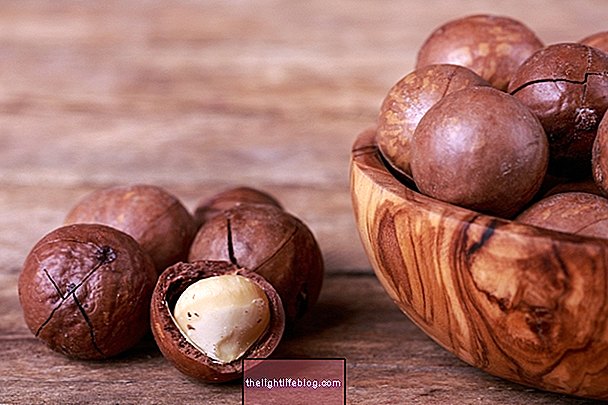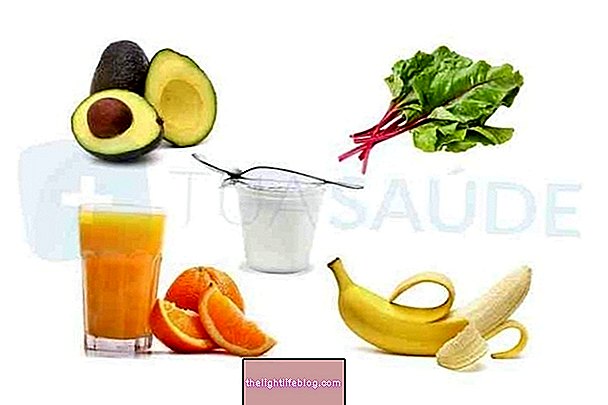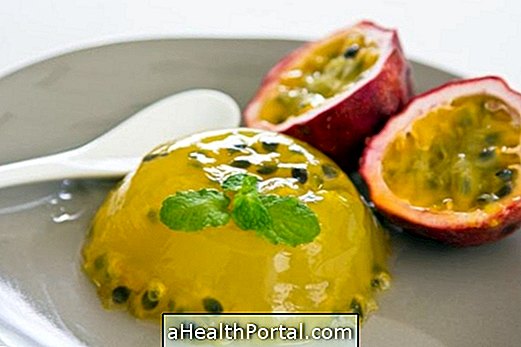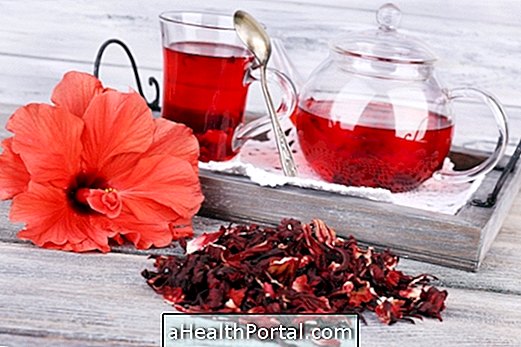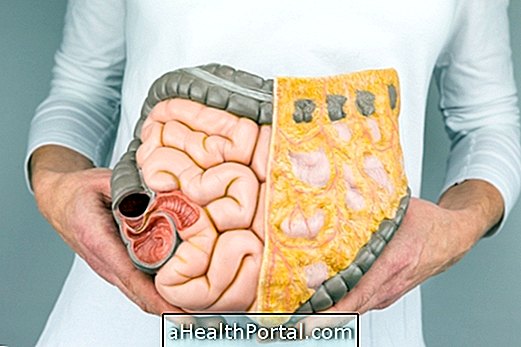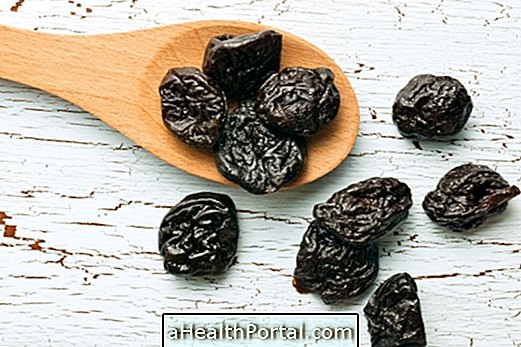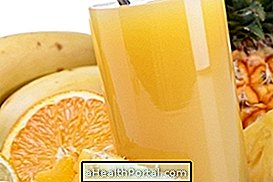Millet is a cereal rich in fiber, flavonoids and minerals such as calcium, copper, phosphorus, potassium, magnesium, manganese and selenium, in addition to folic acid, pantothenic acid, niacin, riboflavin and B6 vitamins, which have antioxidant properties and help to improve constipation, lowering bad cholesterol and controlling diabetes.
In addition, millet is rich in carbohydrates and proteins, but does not contain gluten and, therefore, can be consumed by those with celiac disease or by people who want a gluten-free diet.
Millet can be purchased at health food stores, organic fairs and specialized markets, being found in the form of grains in beige, yellow, black, green or red. Generally, yellow or beige seeds are most consumed.

The main benefits of millet are:
1. Combat constipation
Millet is excellent for improving constipation because it is very rich in soluble fibers that act by absorbing water from the digestive tract forming a gel that helps regulate the intestine.
In addition, the insoluble fibers present in millet act as a prebiotic, contributing to the balance of intestinal flora, which contributes to the proper functioning of the digestive system. This type of fiber is also important to add volume to the stool, which helps to regulate the intestine.
2. Protects against cardiovascular disease
The soluble fibers present in millet help to reduce bad cholesterol and triglycerides, which are responsible for forming fatty plaques in the arteries, as it decreases the absorption of fats from food. Thus, millet improves the functioning of arteries and helps prevent cardiovascular diseases such as heart attack, atherosclerosis and stroke.
In addition, flavonoids and phenolic acid present in millet, have antioxidant action that help to reduce cell damage, keeping blood vessels healthy, and magnesium and potassium help to relax blood vessels and control blood pressure.
3. Helps control blood glucose
Millet is low in simple carbohydrates and rich in complex carbohydrates, making it a low glycemic index food, taking longer to digest than white flour, which helps to avoid blood sugar spikes after meals, allowing people with diabetes control blood sugar levels more easily. Millet magnesium also helps to decrease insulin resistance in people with diabetes.
In addition, the flavonoids present in millet have antioxidant action that act by inhibiting important enzymes that cause type 2 diabetes, controlling glucose absorption and, therefore, millet also helps prevent diabetes.

4. Prevents anemia
Millet is rich in folic acid and iron, which are important for the formation of blood and hemoglobin cells. Thus, when supplying these substances to the body, millet is able to maintain adequate levels of hemoglobin and red blood cells and prevent the appearance of symptoms related to anemia, such as excessive tiredness, weakness and more fragile nails and hair, for example.
5. Helps strengthen bones
Millet is rich in phosphorus and magnesium, which are important minerals to increase bone formation and bone mass, helping to keep bones strong and healthy. In addition, the magnesium provided by millet is able to increase the absorption of calcium and phosphorus by the intestine, which also favors the strengthening of bones, being a great food option in the treatment of osteoporosis.

6. Maintains the health of the body
Millet is rich in niacin, also known as vitamin B3, important for maintaining the functioning and metabolism of cells, and the stability of genes, protecting DNA and preventing damage from aging. Thus, millet helps to maintain the health of the body, healthy skin and the functions of the nervous system and eyes, for example.
Nutritional information table
The following table shows the nutritional composition for 100 grams of millet:
Components
Quantity per 100 g of millet
Energy
378 calories
Carbohydrates
72.85 g
Proteins
11.02 g
Iron
3.01 mg
Calcium
8 mg
Magnesium
114 mg
Phosphor
285 mg
Potassium
195 mg
Copper
0.725 mg
Zinc
1.68 mg
Selenium
2.7 mcg
Folic acid
85 mcg
Pantothenic acid
0.848 mg
Niacin
4.720 mg
Vitamin B6
0.384 mg
It is important to note that to obtain all the benefits mentioned above, millet must be part of a balanced and healthy diet.
How to consume
Millet can be eaten in salads, as an accompaniment, in porridge or added in juices or as a dessert.
This cereal is a great substitute for rice and in this case, you should cook it. To cook millet, you must first wash the grains well and discard those that are damaged. Then, cook 3 parts of water for each part of millet for about 30 minutes, until all the water is absorbed. Then, turn off the heat and leave the millet covered for 10 minutes.
If the beans are soaked before they are cooked, the cooking time increases from 30 to 10 minutes.
Healthy recipes with millet
Some millet recipes are quick, easy to prepare and nutritious:
Millet juice

Ingredients
- 1 tablespoon of millet;
- 1 apple;
- 1 piece of cooked pumpkin;
- 1 lemon juice;
- Half a glass of water.
Preparation mode
Beat all the ingredients in the blender. Strain, sweeten to taste and then drink.
Millet dumpling

Ingredients
- 1 cup of unshelled millet;
- 1 chopped onion;
- Half a cup of grated carrot;
- Half a cup of grated celery;
- 1 teaspoon of salt;
- 2 to 3 cups of water;
- 1/2 teaspoon of vegetable oil.
Preparation mode
Soak millet in water for 2 hours. After that time, put the vegetable oil, onion, carrot, celery and salt in a pan and sauté until the onion is transparent. Add millet and gradually add half a cup of water, stirring the mixture well. Repeat this step until the millet is completely cooked and the mixture has a creamy consistency. Place the mixture on a platter to cool and harden. Unmold and shape the cookies by hand or with a mold. Bake the cookies in the oven until they form a golden cone. Serve next.
Sweet millet

Ingredients
- 1 cup of shelled millet tea;
- 2 cups of milk tea;
- 1 cup of tea of water;
- 1 lemon peel;
- 1 cinnamon stick;
- 2 tablespoons of sugar;
- Cinnamon powder.
Preparation mode
In a saucepan, boil the milk, water, cinnamon stick and lemon peel. Add millet and sugar, mixing over low heat, until the millet is cooked and the mixture has a creamy appearance. Remove the cinnamon stick and lemon peel. Place the mixture on a platter or distribute in dessert cups. Sprinkle cinnamon powder on top and serve.
Was this information helpful?
Yes No
Your opinion is important! Write here how we can improve our text:
Any questions? Click here to be answered.
Email in which you want to receive a reply:
Check the confirmation email we sent you.
Your name:
Reason for visit:
--- Choose your reason --- DiseaseLive betterHelp another personGain knowledge
Are you a health professional?
NoMedicalPharmaceuticalsNurseNutritionistBiomedicalPhysiotherapistBeauticianOther
Bibliography
- OFOSU, Fred Kwame; et al. Phenolic Profile, Antioxidant, and Antidiabetic Potential Exerted by Millet Grain Varieties. Antioxidants (Basel). 2020 Mar 20; 9: 254. 9; 3; 1-14, 2020
- MAJID, Abdul, PRIYADARSHINI, C. G. Poornima. Millet derived bioactive peptides: A review on their functional properties and health benefits. Crit Rev Food Sci Nutr. 60. 19; 3342-3351, 2020
- DIAS-MARTINS, Amanda M .; et al. Potential use of pearl millet (Pennisetum glaucum (L.) R. Br.) In Brazil: Food security, processing, health benefits and nutritional products. Food Res Int. 109. 175-186, 2018
- KAM, Jason; et al. Dietary Interventions for Type 2 Diabetes: How Millet Comes to Help. Front Plant Sci. 7. 1-14, 2016
- XIANG, Jinle; et al. Profile of phenolic compounds and antioxidant activity of finger millet varieties. Food Chem. 275. 361-368, 2019
